The scanCONTROL series of laser scanners from Micro Epsilon are among the highest performing laser profile sensors worldwide in terms of their accuracy, size and measuring rate. Even the tiniest of parts can be measured to the highest precision, which enables a new dimension of quality control.
The application areas are diverse across all industries. Therefore, in addition to determining the blade angle of razors, the laser scanner can also be used to determine the thickness of potato slices, the position of electronic components, the completeness of laser welding seams, and the quality of silicone adhesive beading.
The Micro-Epsilon laser profile scanners can be adapted for use in production processes, quality control, and automation. Their operating principle depends on the laser triangulation method for 2D profile detection. They are capable of detecting, measuring, and evaluating the profiles on different object surface. In the case of a traversing sensor or moving objects, it is also possible to get 3D measurement values.
Micro-Epsilon’s new scanCONTROL 29xx-10/BL is a part of the laser profile scanner product series, and stands out as a new commercial product. It enables high resolution measurements of very small objects.
The scanner is fitted with a blue-violet laser diode and projects a 10 mm long laser line at a profile resolution of 1280 measuring points onto the measurement object. This results in a point distance of merely 7.8 µm, which allows the laser profile scanner to offer twice the resolution of preceding laser scanners with a 25 mm measuring range.
In comparison to the red laser line, the blue laser line can be projected significantly more sharply. The blue laser light allows higher stability and does not penetrate the measurement object because of the shorter wavelength of the blue-violet laser. Therefore, blue laser sensors provide more reliable measurements on organic and red-hot glowing objects.
The new laser profile scanner is used in applications where the highest resolution and precision are required, such as in electronics, mechanics, medicine, or in the production of precision components. In the production of smartphones and tablets, the scanner can investigate, for instance, the position of logos on the rear side, which have to be flush with the housing.
The scanCONTROL 29xx-10/BL is also used in the manufacture of USB connectors where the gap size has to be established precisely to ensure that the connector fits easily into the socket. The other critical factors include the total width of the connector and the relative position of the “tongue” in relation to the outer sides.
The scanCONTROL 29xx-10/BL scanners are mass produced and have to achieve inspection intervals of > 0.1 s which must be adhered to. Faulty parts are sorted out through a NOK signal, repaired, or disposed of.
Applications
scanCONTROL / gapCONTROL - Sensor, solution and system from a single source
Micro-Epsilon has many years of experience in integrating very efficient laser line sensors to user applications and in providing complete systems from a single source.
LLT sensors are adapted to a range of common applications in production processes, quality control and automation.

Defect recognition on worktops
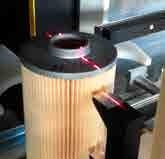
Filter height in the automotive industry
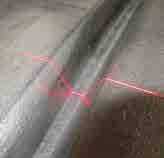
V-gap measurement on pipes

Gap measurement on a car body
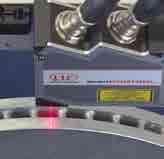
Profile measurements on brake disks
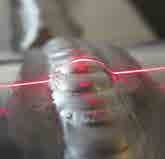
Measuring weld seam profiles
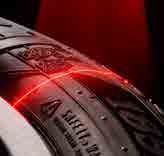
Tyre inspection
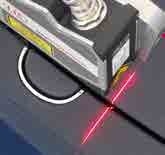
Distance measurement at the centre console
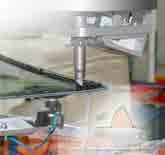
Inspection of the adhesive beading
scanCONTROL / gapCONTROL BL
The laser scanners with blue laser line are used for multi-dimensional measurement on organic and transparent materials, and red-hot glowing metals. The blue laser light allows higher stability and does not penetrate the measurement object because of the shorter wavelength of the blue-violet laser.
In contrast to red lasers, blue laser sensors enable more reliable measurements on organic and red-hot glowing objects. The blue laser line is highly-focused and enables laser scanners with 10 mm line length to be used in maximum precision.
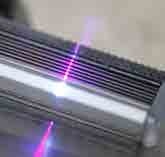
Blade angle of razors
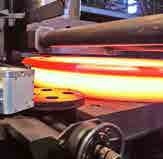
Production of steel-forged rings
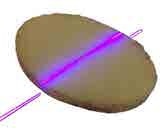
Thickness measurement of potato slices
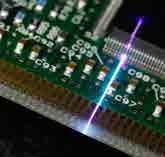
Position of electronic components
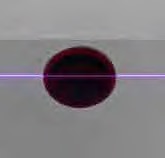
Gap measurement of inserted glass

Inspection of silicone adhesive beading
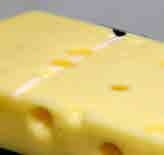
Measurement of hard/sliced cheese
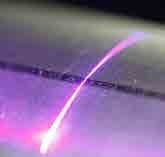
Completeness of laser welding seams
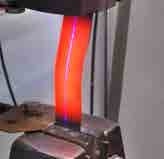
Thermal tests
Compact laser triangulation sensors